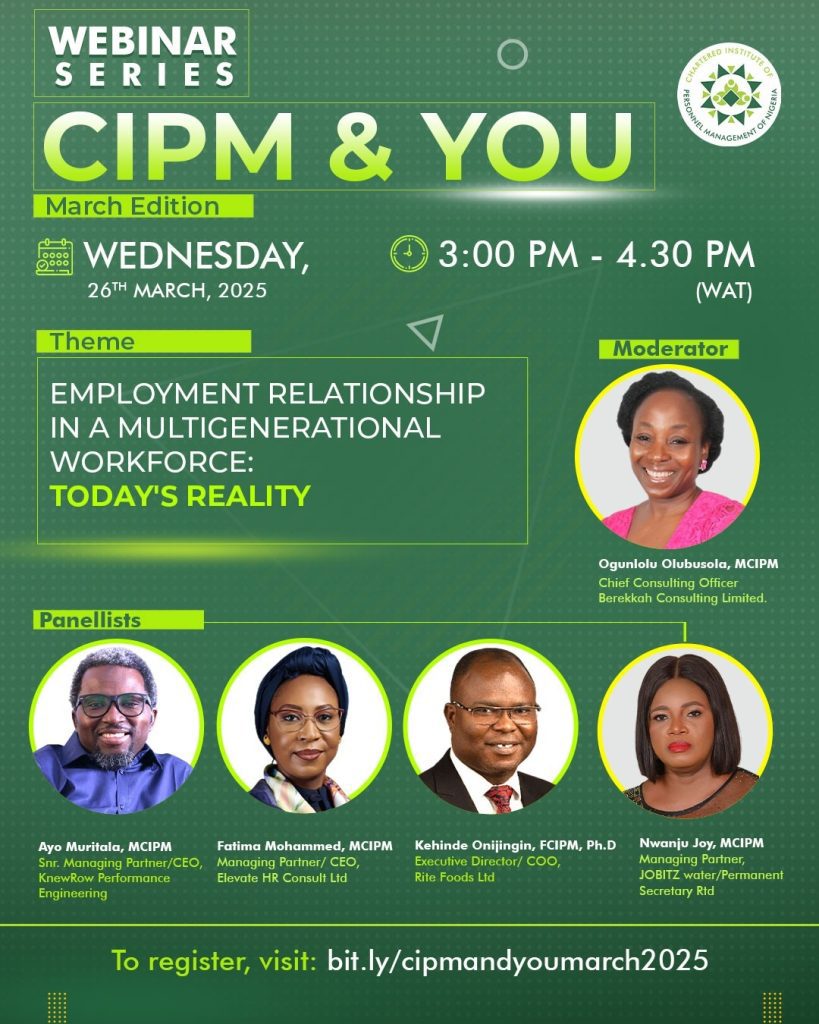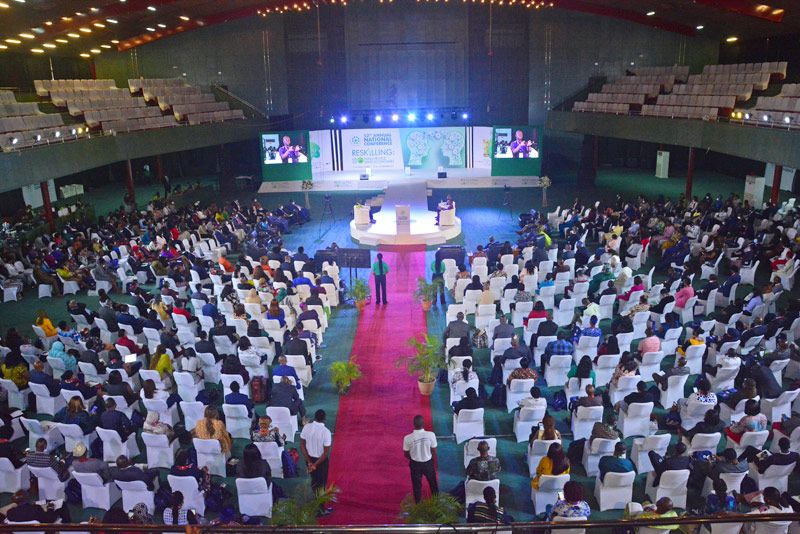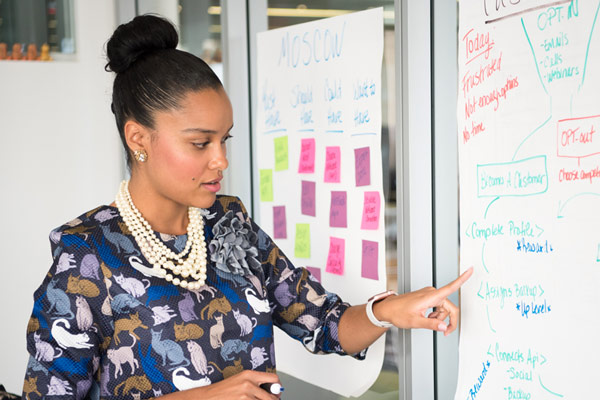Overview
According to Nelson Mandela, “Education is the most powerful weapon which you can use to change the world.”
For the first time in history, the world of work has four and in some cases five generations working side by side in the modern workplace. This marks a significant shift in workplace dynamics, opening up a world of exciting opportunities, but also introducing complex challenges. Each generation brings something unique to the table. Baby Boomers are often celebrated for their discipline, loyalty, teamwork, strong work ethics, and respect for authority. Generation X is known for being fiercely independent, resilient, and adaptable. Millennials stand out for their tech-savviness, collaborative spirit, and purpose-driven mindset. Then we have Gen Zs, the digital natives, who bring fresh perspectives, innovation, and a strong desire for flexibility and inclusion. And we are beginning to witness the earliest members of Generation Alpha beginning to enter the workforce. This diversity in age and experience, when harnessed effectively, becomes a superpower.
But generational diversity also comes with differences in values, communication styles, and workplace expectations. Without understanding and mutual respect, these differences can easily give rise to friction. For example, while Baby Boomers may prefer in-person meetings, Gen Zs might lean toward quick interactions via Slack or Zoom. Some generations prioritise job security; others seek flexibility, autonomy, and work that aligns with their purpose. Forcing rigid office routines might stifle the creativity and innovation that younger generations naturally bring to the table. So, how do we create a work environment that is harmonious, inclusive, and productive for all? Are we doing enough to encourage cross-generational collaboration? Are we building a culture where everyone, regardless of age, feels seen, heard, and valued?
As Peter Drucker once said, “The greatest danger in times of turbulence is not the turbulence itself, but to act with yesterday’s logic.” In today’s fast-evolving world, we simply cannot rely on outdated leadership methods. It is time to adapt, innovate and reimagine how we engage with the workforce, because the future of work is not coming, it is already here. Unfortunately, the focus often leans more toward the challenges than the opportunities this diversity presents. That mindset contributes to the difficulty of effectively managing multi-generational diversity. As HR professionals, this evolving landscape is pushing us to rethink and redefine the nature of the employment relationship.
Multigenerational workplaces have always existed. It is not a new phenomenon. However, what makes the current shift more noticeable is the rapid pace of technological advancement. In the past, generational transitions occurred more gradually, almost like arithmetic progression, step-by-step changes that did not drastically alter the way we worked or related with one another. But now, the change feels exponential, more like a geometric leap. Technology and innovation have accelerated the pace of transformation in ways we did not anticipate. That is why this generational shift is receiving so much attention, and in many cases, creating tension. Rather than acknowledging that the world of work has fundamentally evolved, there is a tendency to label Gen Zs as “problematic” simply because they operate differently. But the truth is, this is not just another change, it is a significant shift, one that challenges long-standing norms and requires a complete rethinking of how we work, lead, and collaborate.
Pressing issues that HR practitioners need to pay attention to in having multiple generations in the workplace
The presence of multiple generations in the workplace has become a pressing issue in recent times due to the following four key factors:
- Rapid Technological Advancements: This is the most significant factor driving the heightened awareness of generational diversity. The pace of technological change is incredibly fast, making it challenging for everyone to keep up. This has exposed a noticeable gap between younger generations, who are often digital natives, and older employees, who must adapt and learn to navigate new tools and platforms. The disparity in digital fluency has made generational differences more evident than ever.
- Shifting Career Expectations: Unlike previous generations who prioritised job stability, security, and financial reward, today’s workforce, particularly Millennials and Gen Zs, seek purpose, flexibility, and opportunities for continuous learning. They value autonomy and do not want to feel constrained in rigid structures. This shift in expectations calls for HR professionals to design strategies that accommodate a broad spectrum of work styles and motivational drivers, aligning with the unique values of each generation.
- Demographic Diversity: The modern workforce spans a wide age range, bringing together individuals with different life experiences, communication styles, and approaches to problem-solving. This age diversity can be a strength, but only if organisations recognise and intentionally leverage it to foster collaboration and innovation.
- Cultural and Social Shifts: Today’s work environment places a strong emphasis on issues such as mental health, work-life balance, and more recently, work-life integration. These were not traditionally prioritised in past workplace cultures. The increasing importance of employee well-being and personal fulfillment has added another layer to the complexity of managing a multigenerational workforce.
Biggest misconceptions about Gen Z, Gen Alpha and Millennial generations and how these misconceptions can be debunked
Younger generations are unafraid to challenge the status quo. They question authority and constantly ask questions. Unlike older generations, who often felt powerless and silent when they first entered the workforce, the younger employees are not afraid to speak up. They expect an open-door policy.
In Nigeria, our cultural background heavily influences how we perceive communication. The directness of younger generations, who are often influenced by global practices, can sometimes be seen as rude or challenging. These individuals, constantly online, see their peers in other parts of the world, like the U.S., interacting more casually. Calling someone by their first name in the workplace, which is common in many developed countries, may seem unconventional in Nigeria, where such familiarity is not the norm.
Legitimate need to rethink the traditional work structures for the Gen Zs, Millennials and Gen Alpha
Firstly, it is important to recognise who holds these viewpoints. It is certainly not Gen Z, Millennials, or Gen Alpha. The traditionalists, who are mostly from the Baby Boomer generation, are gradually fading out. It would be a mistake to assume that younger generations are being overly indulged. We must acknowledge that these younger generations, particularly Gen Z, Millennials, and Gen Alpha, are here to stay in the workforce and are making significant impacts. You now have individuals in their early thirties rising to C-suite positions and making critical business decisions in multi-billion-dollar companies. To disregard their opinions would be shortsighted.
The younger generations may place a higher emphasis on issues like work-life balance, which older generations might view as secondary or even trivial. However, these values are essential to them and cannot be dismissed. For organisations to achieve their goals, it is crucial to recognise and align with the expectations of their workforce. These younger, digitally native workers are doing things that might seem unconventional or even unimaginable to some older generations. But this is the reality of today’s workplace. There must be a mutual understanding to find a balance between the expectations of both the older and younger generations.
The role of technology in shaping employment relationships in a multigenerational workforce
Technology is at the heart of the challenges and opportunities we face in managing a multigenerational workforce. And while it presents certain difficulties, especially for older generations, it is undeniably a positive force. Technology has made work more efficient, offering flexibility and adaptability that modern workplaces require. With multiple generations working side by side, we cannot expect Baby Boomers to operate like Gen Z. Instead, they are learning to catch up with the pace and agility that Gen Z naturally brings to the table. It would be unfair and unwise to dismiss these younger employees as “just kids.” Their skills are real and relevant, and in many cases, they are more tech-savvy than their older colleagues. That is a fact we must acknowledge. What is needed now is a continuous commitment to learning. Training and retraining, especially in technology, should be prioritised for all generations. Older employees may need structured support to become proficient in tools like Excel and other digital platforms. Meanwhile, Gen Z often learn independently through platforms like YouTube or even TikTok, quickly picking up new skills on their own. Therefore, workplaces must embrace flexibility and mutual respect. Each generation brings unique strengths, and no one should be sidelined. The key is to foster a shared understanding that we are all working toward the same organisational mission.
How organisations can effectively address the expectations of a strong desire for purposeful work, work-life balance and work-life integration
Organisations must be intentional and proactive in addressing the realities of a multigenerational workforce. This cannot be approached reactively, it requires a well-thought-out system, built with deliberate effort and inclusive participation. It is not enough to simply implement policies; organisations must actively involve their people, especially the younger generation, in shaping the systems that guide how work is done.
When employees feel a sense of ownership and involvement, the results will be evident. Young professionals today are looking for purpose-driven work. They want to understand how their contributions connect to the bigger picture. They seek alignment between their tasks and the organisation’s mission, and they want to see the tangible impact of their efforts. Furthermore, being physically present at work without performance does not necessarily equate to productivity. The younger generations value work-life balance, and they prioritise working smart over working hard. They thrive in environments that encourage innovation and creativity, and do not perform well in rigid, inflexible systems.
The workforce today wants to be part of co-creating the work culture and processes. Of course, the experience and wisdom of older generations are still essential, but rather than dismissing new ideas outrightly, leaders must guide through evidence and insight, showing potential pitfalls and opportunities. Simply saying “it won’t work” is no longer enough. It must be explained, justified, and communicated with respect.
Some of the successful strategies that companies have used to integrate and engage multiple generations
To build an effective strategy for managing a multigenerational workforce, the first step is understanding who your people are and what you want to achieve. This begins with gathering data through tools like a caution index or employee engagement surveys, to gain insight into employees’ motivations, preferences, expectations, and definition of success. Once you have this clarity, you can design an inclusive talent management framework that gives equal representation and opportunities to every generation within the workforce. This includes clearly defining:
- Career pathing tailored to different generational needs.
- Communication strategies that resonate across age groups.
- Learning and development initiatives suited to various learning styles.
- Compensation and benefits that align with diverse values.
- Recognition programmes that reflect what each generation values most.
It is critical not to skew your strategies towards one group simply because they are the majority. A truly inclusive approach ensures that all age groups feel seen, heard, and valued. Additionally, organisations should implement social engagement programmes that foster cross-generational connections. These could include:
- Sports and wellness events.
- Celebrations of personal and professional milestones.
- Employee Assistance Programmes (EAPs) to support well-being across life stages.
Most importantly, organisations must have a robust policy on Equity, Diversity, and Inclusion (EDI). Without such a framework, efforts may remain fragmented and ineffective. When policies are comprehensive, inclusive, and actionable, it is far better positioned to engage and support every generation in the workplace.
Role of leadership in fostering collaboration and understanding across the different generations
Leadership plays a critical role in managing a multigenerational workforce. First and foremost, leaders must ensure a conducive and inclusive work environment that encourages open communication across all age groups. There should be no hierarchy of voices, younger employees should not be dismissed as “too young” to engage with senior leadership. Instead, organisations must foster an open-door policy where every employee feels heard and valued, regardless of age or rank.
In today’s dynamic workplace, rigid hierarchical structures and excessive bureaucracy hinder progress. For organisations, especially those with profit goals and mission-driven culture, to thrive, leadership must rethink and redefine internal policies to be more inclusive, transparent, and agile. Leaders, many of whom may be Baby Boomers, also need to reimagine mentorship. It does not always have to be older employees mentoring the younger ones. In fact, reverse mentorship is becoming increasingly valuable as younger employees often possess advanced digital skills and a fresh perspective that can benefit the entire organisation. Leadership must shift from policy-making that serves one generation’s comfort to a forward-thinking approach that supports a diverse workforce. It is about adapting to the realities of today’s workplace, not clinging to outdated norms. Both public and private sectors must align on how they accommodate and engage a multigenerational workforce, because in a country like Nigeria, talent often transition between the two. Creating cohesive, inclusive policies is essential for national workforce development and effectiveness.
How to strike the balance in retaining and mentoring the younger generation while preserving the invaluable experience and contributions of the older generations
We cannot overlook or discard the older generations in the workforce simply because we now have a younger, more innovative generation. The older generation holds valuable institutional knowledge, which comes in two forms:
- Explicit knowledge, which is documented, systemised, and transferable through manuals, databases, and processes.
- Tacit knowledge, which is intuitive and gained through experience, difficult to articulate but incredibly valuable for decision-making and organisational continuity.
To ensure that this knowledge is preserved and transferred, organisations must establish structured mentorship initiatives and pair experienced professionals with younger employees. These programmes do more than just facilitate knowledge transfer, they also provide career guidance and foster mutual respect, as younger employees begin to recognise and value the insights that older colleagues bring. In the same vein, reverse mentoring should be encouraged, where younger generations share insights, especially around technology, digital trends, and innovative practices, with their senior counterparts. This two-way learning approach promotes inclusiveness and helps bridge generational gaps.
For this to work effectively, organisations must cultivate a culture of inclusive leadership and open communication, one that values transparency, empathy, and encourages contributions from all age groups. Leaders must be trained to recognise and leverage the unique strengths of every generation. Additionally, collaborative workspaces, both physical and virtual, should be designed to encourage intergenerational cooperation. While this is often more common in the private sector, the public sector can also begin to adopt such practices. Integrating flexible work policies will also help accommodate different working styles and preferences across generations, reinforcing a sense of belonging and productivity. Also, recognition and reward systems should be inclusive and tailored. Recognise the innovative contributions of younger employees while also acknowledging the long-term, strategic impact of older generations. By understanding what job satisfaction means to each group, organisations can better motivate and retain talent across all age brackets.
Conclusion
It is crucial for HR professionals to recognise that the world of work is rapidly evolving, and so are employees’ expectations. The era when employees looked forward to long service awards or stay solely for pension benefits is fading. Today’s workforce defines success on their own terms, it is no longer just about promotions, titles, or salary increases. For many, success means finding fulfillment, whether switching jobs frequently, becoming a CEO within five years of graduation, or pursuing work that aligns with their personal values and happiness. As HR professionals, we must acknowledge and adapt to this shift. It is imperative to develop robust, forward-thinking policies that address these new realities, so we are not caught unprepared when performance challenges arise.
Navigating a multi-generational workforce requires a thoughtful and strategic approach. It calls for a balanced blend of technology adoption, inclusive policies, and ongoing dialogue. By intentionally harnessing the unique strengths of each generation, organisations can create synergy rather than competition. The goal is to strike a balance and fully leverage the diverse capabilities of all employees to drive collective success.
As HR practitioners, we should foster an inclusive environment where every generation can learn from one another. It is essential to harness the strengths of both the older and current generations, ensuring that inclusiveness thrives by leveraging these diverse strengths within the workforce. Moreover, all generations must align with the company’s policies. Regardless of your generation, once you join the organisation, there should be a shared culture and adherence to the policies in place.
This thought leadership piece was coined from the March 2025 edition of the ‘CIPM and YOU’ webinar and represents the opinions of the panelists during the session.




